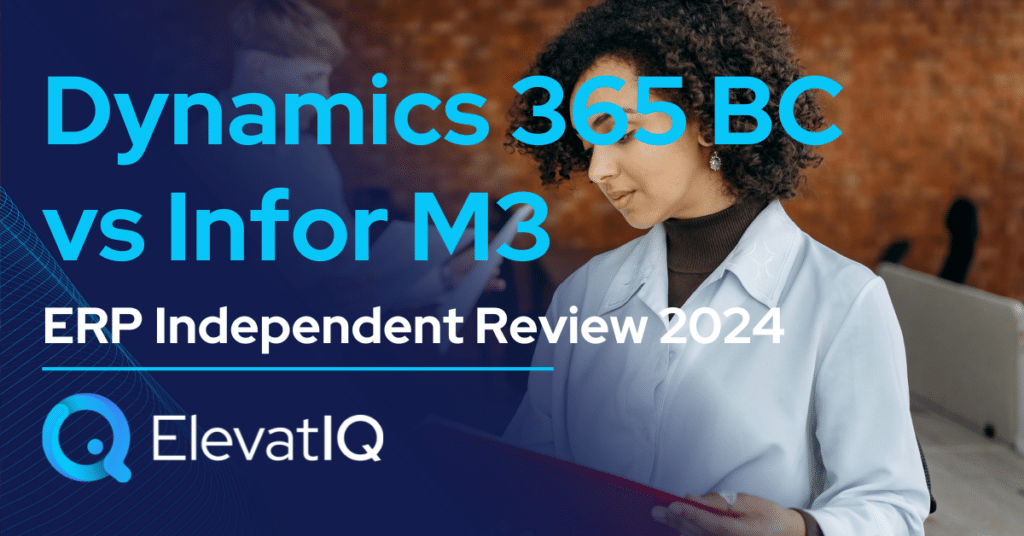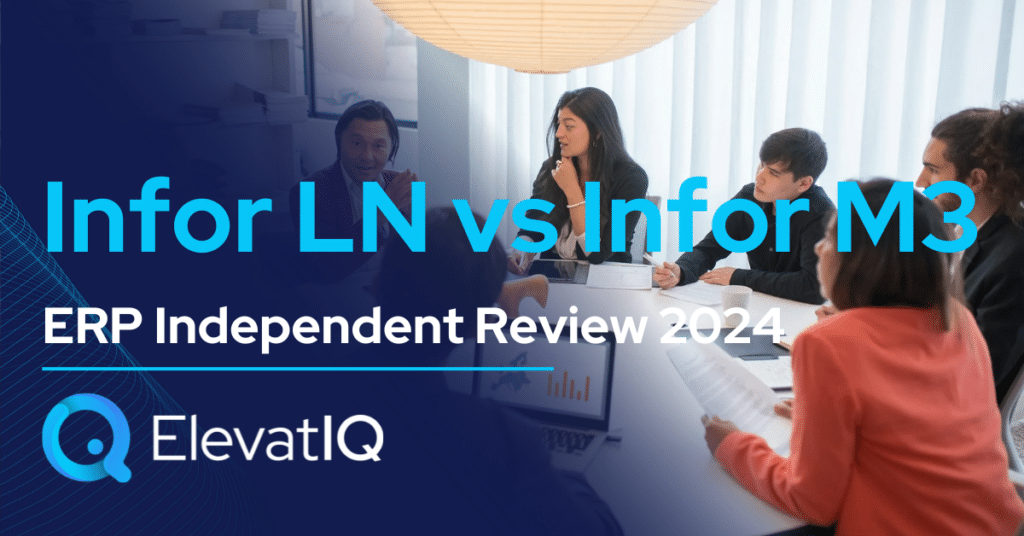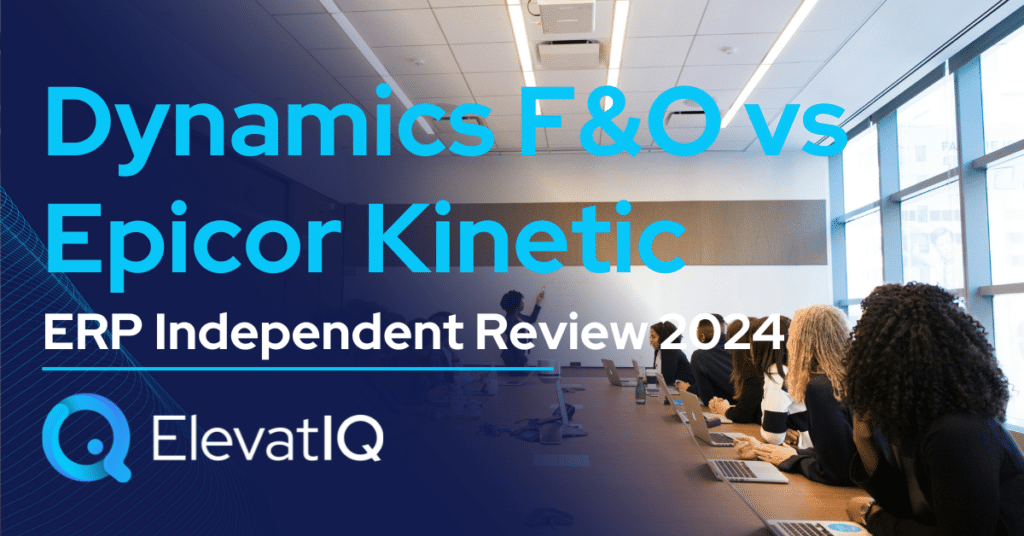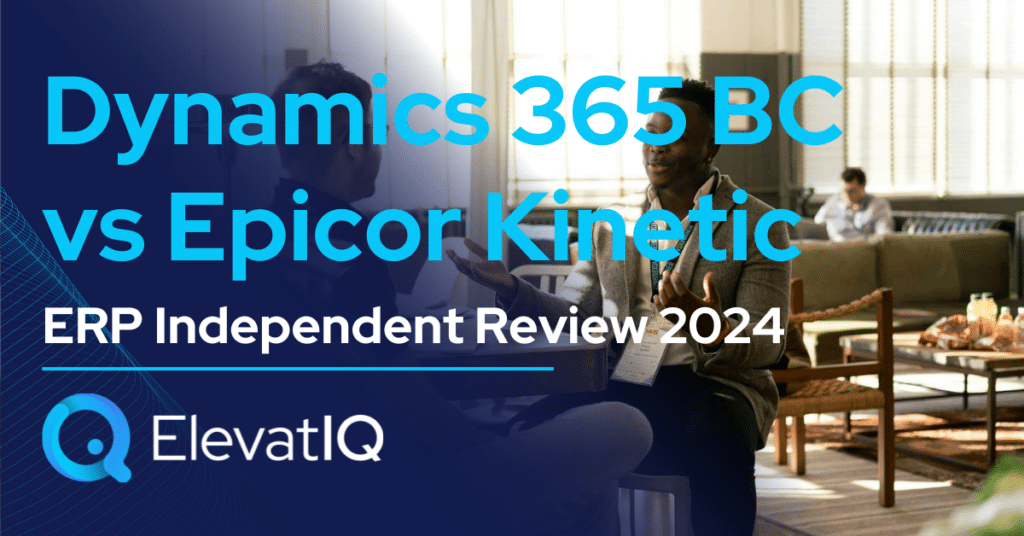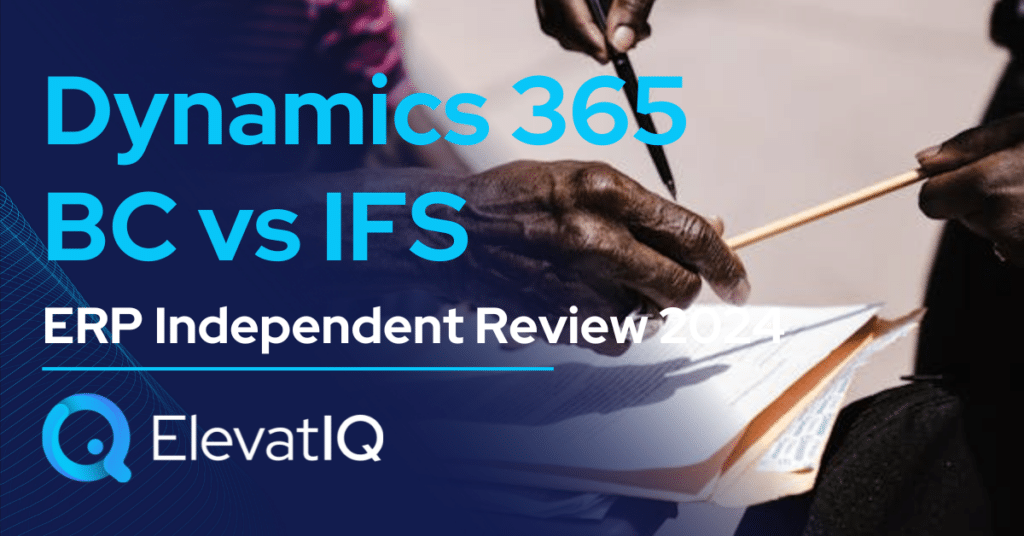Microsoft Dynamics 365 F&O stands out for its enhanced cloud-native functionality, leading in capabilities over competitors like SAP S/4 HANA and Oracle Cloud ERP. It caters to large, global companies with complex business models, offering mature technology and a successful track record across industries. On the other hand, Infor CloudSuite M3 targets companies surpassing entry-level ERP systems like Acumatica, Infor CSI, or NetSuite. It also delivers mature capabilities for intricate manufacturing and distribution operations.
Dynamics F&O is ideal for companies with diverse global entities, spanning industries like manufacturing, distribution, and construction. Whereas, Infor CloudSuite M3 provides a superior suite experience akin to SAP and Oracle, featuring enterprise-grade best-of-breed functionalities, including PLM, WMS, WFM, BI, and a Supply Chain collaboration platform. It is also successful in the upper mid-market, targeting the $250M – $750M revenue range.
Infor CloudSuite M3 boasts extensive features tailored for process and apparel manufacturing, covering industries such as fashion, F&B, and chemicals. It is also adept at facilitating advanced global operations, particularly for companies spanning multiple countries seeking to optimize cost synergies globally. However, navigating the Dynamics 365 ecosystem may require assistance due to the presence of unqualified partners. Choosing between Dynamics F&O vs Infor M3 requires a detailed examination, and thus, this comparison offers valuable insights for ERP selection projects. Therefore, let’s explore further.
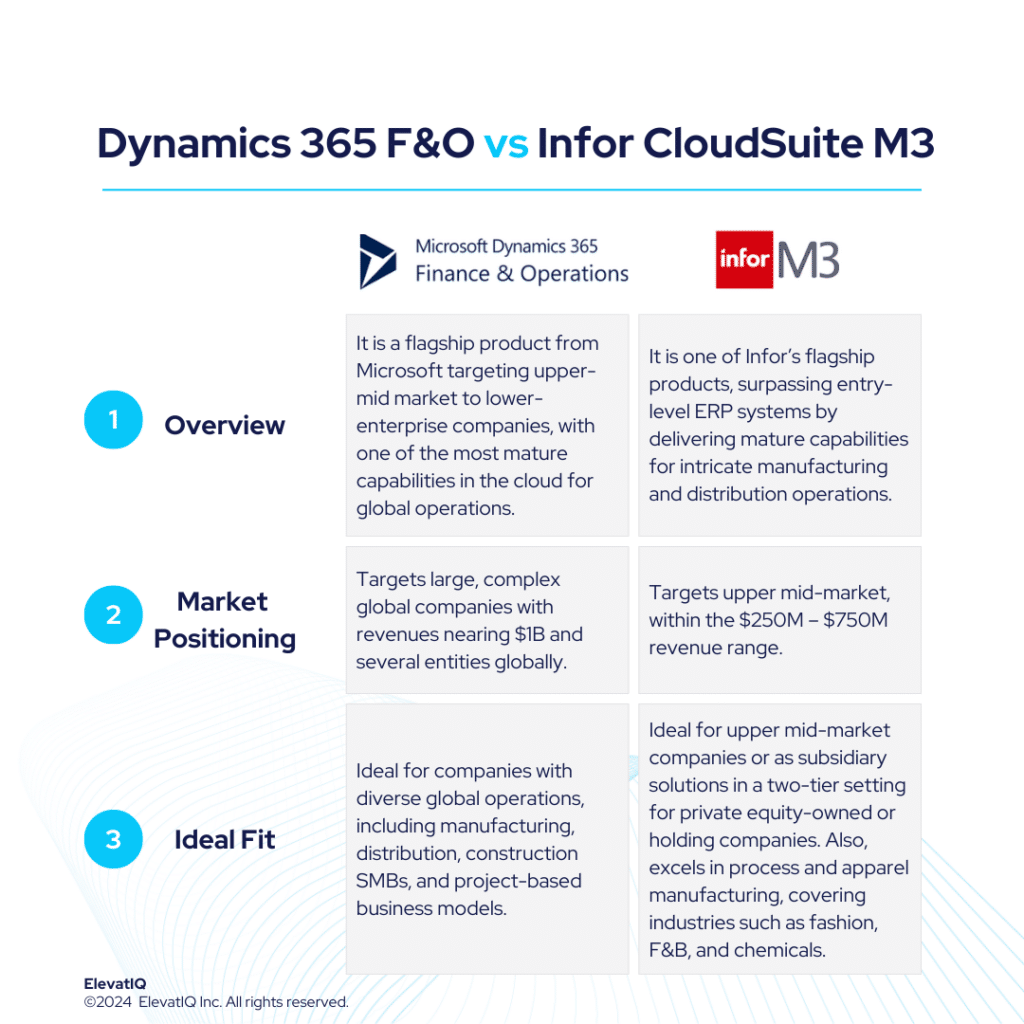

| MS Dynamics 365 F&O | Infor CloudSuite M3 | |
| Started in | One of the most established enterprise software companies in the world | 2006 (Acquired by Infor) |
| Ownership by | Microsoft | Koch Industries |
| No. of customers | 50,000+ | 1000+ |
What is Microsoft Dynamics 365 Finance & Operations (F&O)?
Microsoft Dynamics 365 F&O is often the third choice for larger global accounts, following SAP S/4 HANA and Oracle Cloud ERP. It offers a mature ecosystem with modern, cloud-native technologies, proving successful across various industries. It is perhaps the most diverse solution accommodating several global business models in one database, making it an ideal solution for lower enterprise companies. While a great fit as a corporate ledger for large enterprises, it’s not as proven as other leading solutions in the enterprise market with workloads as high as millions of journal entries per hour that Fortune 1000 companies might demand.
Microsoft Dynamics 365 F&O excels in localizations where other solutions may falter. A vibrant ecosystem makes it suitable for private equity and also holding companies aiming to streamline their portfolio companies on one solution. SMBs, however, might find its complex data model overwhelming. Large, complex global companies with revenues exceeding $1B will find Microsoft Dynamics 365 F&O appealing.
Although Dynamics F&O lacks the operational depth of specialized solutions, larger companies favor its corporate-level financial control. In a two-tier setting, they often particularly utilize additional Dynamics 365 F&O add-ons like Adeaca for operational requirements. Furthermore, Dynamics F&O offers seamless integration for field service, HCM, and CRM at the database level, empowering large companies to construct a best-of-breed architecture. It is especially strong with WBS-centric processes covering operational and financial schedules equally well. The challenge with MS Dynamics 365 F&O would be the best-of-breed ancillary system, which are not owned and also maintained by Microsoft, requiring third-party add-ons.
What Is Infor CloudSuite M3?
Infor CloudSuite M3, is one of Infor’s flagship solutions, catering to particularly distinct micro-verticals across various industries. Sharing similar suites with Infor LN and also built on the Infor OS platform, it is successful in the upper mid-market, targeting the $250M – $750M revenue range. Positioned for companies surpassing entry-level ERP systems like Acumatica, Infor CSI, or NetSuite, this solution delivers mature capabilities for intricate manufacturing and also distribution operations. Infor CloudSuite M3 provides a superior suite experience akin to SAP and Oracle thus, featuring enterprise-grade best-of-breed functionalities, including PLM, WMS, WFM, BI, and a Supply Chain collaboration platform.
Infor CloudSuite M3 boasts extensive features tailored for process manufacturing and apparel manufacturing, covering industries such as fashion, F&B, and chemicals. It is also adept at facilitating advanced global operations, particularly for companies spanning multiple countries seeking to optimize cost synergies globally. The native capabilities of Infor M3 address global trade and compliance concerns, which are particularly crucial for international business operations.
While Infor CloudSuite M3 serves as an excellent operational solution for a 2-tier architecture for enterprise companies, its limited focus on certain industries might not be the best fit for enterprise companies diversifying their operations or aggressive with their M&A strategy. The intricate data model and Bill of Materials (BOM) demand significant internal expertise and also external advisory assistance to extract operational efficiencies. Notably, the technology landscape for Infor CloudSuite M3 remains somewhat patchy and less modern compared to its competitors. Furthermore, the ecosystem and consulting support for this solution is relatively limited. Despite these challenges, Infor CloudSuite M3 stands out as a robust manufacturing solution for upper mid-market companies with budget constraints.
Dynamics F&O vs Infor M3 Comparison
Navigating the choice between Microsoft Dynamics F&O vs Infor M3 is a significant decision for businesses particularly looking for operational efficiency and strategic alignment. Thus, this section delves into the comprehensive comparison of Dynamics F&O vs Infor M3 across various critical dimensions.
| MS Dynamics 365 F&O | Infor CloudSuite M3 | |
| Global Operational Capabilities | Can host multiple entities from different countries. | Robust financial hierarchies and global trade compliance functionality integrated. |
| Diverse Capabilities | Can accommodate most business models, may require add-ons. | Supports diversified manufacturing business models. |
| Best-of-breed Capabilities | Crucial capabilities such as PLM, etc, may not be pre-integrated. | Best-of-breed integrations provided out-of-the-box. |
| Last-mile Capabilities | May require add-ons for specific micro-verticals. | Last-mile capabilities along with breadth of capabilities for diversified manufacturing business models. |
| Operational Functionalities | Rich operational functionality for large enterprises. | Infor CloudSuite M3 is a legacy solution with limited cloud-natve capabilities such as universal search, mobile experience, etc. |
| Integration Capabilities | Pre-integrated with CRM and field service. | Tools such as HCM, PLM, data lake, ERP, WMS, TMS, and advanced supply chain planning, are all pre-integrated. |
| Manufacturing Capabilities | Mature capabilities support diverse models. | Delivers mature capabilities for apparel, F&B, and chemical manufacturing. |
| Pricing Model | Cost per user per month with flexible user management, without long-term commitment. | Subscription-based |
| Key Modules | 1. Financial Management 2. Supply Chain Management 3. Manufacturing Management 4. Human Capital Management 5. Business Intelligence and Reporting 6. Security and Compliance 7. Develop and Customize 8. System Administration | 1. Financial Management 2. Manufacturing Operations 3. Enterprise Asset Management 4. Supply Chain Management 5. Customer Sales and Service 6. Application Foundation |
Dynamics F&O vs Infor M3 Feature Comparison
Both platforms offer a plethora of features and functionalities designed to streamline business operations and enhance efficiency. In this feature comparison, we delve into particularly the distinct capabilities of Dynamics F&O vs Infor M3 across various critical dimensions, providing insights to aid businesses in making informed decisions regarding their ERP selection. Thus, this section discusses features under each of the following modules, particularly financial management, supply chain management, and manufacturing management.
Financial Management Comparison
In this section, we are discussing a detailed comparison of the financial management capabilities particularly offered by Dynamics F&O vs Infor M3. By examining their respective strengths and functionalities, particularly in managing financial processes. Businesses can therefore gain valuable insights to determine the best-suited ERP solution for their financial management needs.
| MS Dynamics 365 F&O | Infor CloudSuite M3 | ||
| Financial Management | General Ledger | Creates and maintains accurate records for financial transactions and generates regular financial reports. | Enables organizations to manage financial transactions, maintain accurate balances, and generate complete financial statements. |
| Accounts Receivable and Accounts Payable | Automates workflows for managing vendor invoices, payments, and customer invoicing, streamlining the entire invoicing process and improving cash flow management. | Supports analysis across all accounting dimensions, including non-reconciled data for the AP model. | |
| Cash Flow Management | Provides comprehensive cash flow forecasting capabilities, allowing to project future cash positions, identify potential shortfalls, and make informed decisions. | Provides complete control over accounts receivable and cash flow processes, unifying all AR information to monitor cash collection and enhance productivity and efficiency. | |
| Other Features | Chart of Accounts – Enables the creation of a hierarchical structure for categorizing financial information. | Currency Management – Enables currency conversion for better monetary analysis, allowing amounts to be expressed in transaction, division, and company currencies, with a default exchange rate type for conversions. | |
| Budgeting and Forecasting – Creates and manages budgets across different departments and business units. Also, leverages historical data and predictive analytics, to make accurate projections and align their financial strategies with business goals. | Tax Management – Ensures accurate VAT calculation and recording for each country, automating tax calculations based on recipient location and country-specific rules, and maintaining financial compliance. |
Supply Chain Management Comparison
In this comparison, we explore and analyze the supply chain management capabilities of Dynamics F&O vs Infor M3, shedding light particularly on their respective strengths and weaknesses.
| MS Dynamics 365 F&O | Infor CloudSuite M3 | ||
| Supply Chain Management | Warehouse Management | Provides advanced warehouse and transportation management features, including inventory tracking, order fulfillment, shipment planning, and real-time visibility into logistics operations. | Optimizes operations with inventory management, labor management, 3PL billing, and 3D visualization, enhancing efficiency and interactivity. |
| Service Management | Establishes service agreements and service subscriptions, handles service orders and customer inquiries, and manages and analyzes the delivery of services to customers. | Offers work order processing, maintenance, material management, and operation reporting, aiding global manufacturers, distributors, and after-sales service providers in managing complex value chains efficiently. | |
| Inventory Management | Offers real-time visibility into inventory levels, demand, and supply, enabling organizations to optimize their inventory planning, reduce stockouts, and improve customer satisfaction. | Provides advanced statistical forecasting and stock recommendations for efficient inventory management, as well as supplier and customer rebate management to maintain high margins. | |
| Other Features | Procurement and Sourcing – Streamlines the procurement process by providing end-to-end visibility and control over purchasing activities. Also automates and optimizes the procurement workflows, reducing costs and improving supplier relationships. | Purchase Order Management – Includes automation, vendor payment tracking, payment scheduling, check printing, open purchase order alerts, document management, direct ACH bill payment, and vendor records | |
| Demand Planning and Forecasting – Generates accurate demand forecasts, helping organizations optimize production planning, inventory levels, and procurement decisions. | Requisition Management – Automates procurement processes from requisition to payment, including supplier selection, purchase order management, and invoice matching. |
Manufacturing Management Comparison
In this comparison, we explore and analyze the manufacturing management capabilities of Dynamics F&O vs Infor M3, shedding light, particularly on their respective strengths and weaknesses.
| MS Dynamics 365 F&O | Infor CloudSuite M3 | ||
| Manufacturing Management | Production Planning | Provides comprehensive production planning and control capabilities, allowing organizations to optimize their manufacturing processes. The system supports various production scenarios, including make-to-order, make-to-stock, and engineer-to-order, while providing real-time visibility into production schedules, resource allocation, and material requirements. | Supports planning in both multi-facility and single-facility production environments, managing critical materials at the facility level. |
| Other Features | Shop Floor Management – Offers real-time monitoring of shop floor activities, capturing data on machine utilization, labor productivity, and production progress. | BOM and Routing – Defines the product structure and assembly sequence, listing components and specifying the operations, work centers, and machines required for manufacturing. | |
| Product Lifecycle Management – Enables organizations to manage the entire product lifecycle, from design and engineering to manufacturing and after-sales service. The system integrates product data, engineering change orders, and quality management processes, ensuring seamless collaboration and visibility across different departments. | Advanced Planning and Scheduling – Generates real-time projections by comparing demands against a long-term plan, optimizing production resources, reducing costs, improving performance, and synchronizing supply chain operations. |
Pros of Dynamics F&O vs Infor M3
When evaluating ERP solutions, understanding the distinct advantages of Dynamics F&O vs Infor M3 is crucial. In this section, we are particularly exploring the strengths of Dynamics F&O vs Infor M3 across various dimensions. Thus, shedding light on their respective capabilities and functionalities.
| MS Dynamics 365 F&O | Infor CloudSuite M3 |
| Has a significant advantage in its extensive consulting base and a vibrant marketplace, a unique benefit unmatched by many ERP systems. | Ideal for upper mid-market companies or as subsidiary solutions in a two-tier setting for private equity-owned or holding companies. |
| Supports global operations and business models and pre-baked integration for the best-of-breed CRM and field service solutions. | It can support the most complex manufacturing business models, WBS-centric manufacturing, or support for attributes with MRP planning. |
| Embedded WMS and TMS processes help companies that might require end-to-end traceability even after the good leaves the dock. | Most tools that make-to manufacturer would require, such as HCM, PLM, data lake, ERP, WMS, TMS, and advanced supply chain planning, are all pre-integrated with Infor CloudSuite M3. |
| Legacy product rearchitected for the cloud. So, while better than other legacy products that might be behind in the cloud. May not have as superior user experience as required. | While most smaller solutions might require ad-hoc arrangements for global financial operations, Infor CloudSuite M3 has them natively built. |
Cons of Dynamics F&O vs Infor M3
Just like recognizing strengths is important, it’s also crucial to weigh the specific drawbacks of Dynamics F&O vs Infor M3. Therefore, in this section, we will delve into the limitations and challenges associated with Dynamics F&O vs Infor M3 across various operational and financial dimensions.
| MS Dynamics 365 F&O | Infor CloudSuite M3 |
| Overwhelming for smaller companies with the configuration and approval flows built for large enterprises. | The limited focus on certain business models poses the risk of requiring other ERP systems to support complex and diverse business operations. |
| Might not be able to match the performance expectations of larger organizations where processing millions of journal entries per hour is required. | Private equity and holding companies requiring global solutions with a tier-2 solution at the subsidiary level might not be the best use of Infor CloudSuite M3’s strengths. |
| Overbloated financial control processes, such as compliance, allocation, and approval flows, which are only necessary for large organizations. | Infor CloudSuite M3 is a legacy solution with limited cloud-native capabilities such as universal search, mobile experience, etc |
| May require consulting assistance to navigate the channel, given the presence of unqualified ISVs and VARs. | The consulting base and marketplaces are virtually non-existent for Infor CloudSuite M3. |
| Integration with A&D-specific PLMs, configurators, and CPQ systems is not out-of-the-box, increasing the implementation time and costs. | Verticals such as apparel manufacturing demand deeper integration of PLM, vendor portals, and merchandising solutions to effectively manage their unique processes. |
Conclusion
In conclusion, selecting between Dynamics F&O vs Infor M3 hinges on a company’s specific needs and operational scale. Dynamics F&O, with its robust cloud-native functionalities and extensive global capabilities, is particularly suited for large, complex enterprises with diverse business models and significant global footprints. Its strengths lie in financial management and particularly the seamless integration of various best-of-breed systems, making it an ideal choice for organizations with multifaceted operational needs. However, smaller companies may find its extensive configurations overwhelming, and its overbloated financial control processes could be more than what is necessary for such businesses.
On the other hand, Infor CloudSuite M3 is an excellent fit for upper mid-market companies, especially those in the process and apparel manufacturing sectors. It provides a comprehensive suite of pre-integrated best-of-breed functionalities and also excels in supporting advanced manufacturing and distribution operations. Despite its strong capabilities, Infor CloudSuite M3 has a more limited focus on certain industries and might not offer the comprehensive global solutions required by larger enterprises. Moreover, its legacy nature and limited cloud-native features might pose challenges in achieving the seamless, modern user experience provided by its competitors.
To get a 360-degree view of feature comparisons, it’s essential to explore not only Dynamics F&O vs. Infor CloudSuite M3 but also insights from other analyses such as Dynamics F&O vs. NetSuite, SAP S/4 HANA, Oracle Cloud ERP, Acumatica, MS Dynamics 365 BC, and Infor CloudSuite LN. Also, seeking assistance from an independent ERP consultant can significantly aid the decision-making process, offering specialized advice and direction tailored to the specific needs of the business.




